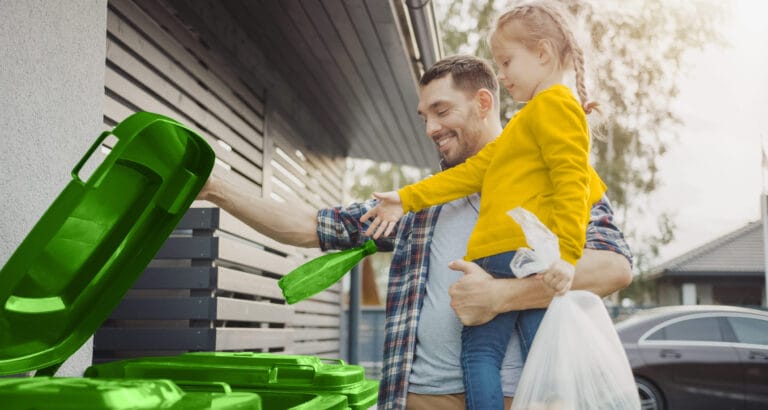
Credibly commercialising sustainability
The list of things to be worried about only seems to get longer whether a consumer, retailer or supplier. This can lead to conflicting priorities and a say-do gap. At Quantic we believe that brand owners can develop solutions that help consumers live more sustainably and the first step is helping them to buy more sustainably.
Identify, imagine, innovate
As brand owners we have a responsibility to design and develop brands that integrate business, social and/or environmental responsibilities as one connected agenda. Sustainability is no longer about doing less harm. It’s about doing more good and that means pursuing ‘good’ growth. Inspired by the quote from explorer Robert Swan ‘the greatest threat to our planet is the belief that someone else will save it’, our approach helps brand owners quickly get into action through:
- a declared time-bound ambition (reflecting corporate initiatives in play)
- identification of the impact that the brand can have credibly and authentically across its full value chain
- working through the ‘so what’ for the brand/portfolio mix and creating a roadmap to responsible growth
- engaging customers in sustainability conversations that are either consumer led (visible at the POP) and/or customer led (joint organisational initiatives that are value chain, operations led).
Only 17% of the SDG targets are on track, while nearly half show minimal or moderate progress. Meanwhile, progress on more than one-third has stalled or even regressed. (UN SDG Report 2024)
An urban myth, there’s value to be captured.
That isn’t always true. Some consumers, while trying to save money, are adopting habits that are more sustainable, such as driving less, buying secondhand clothing, and, in some cases, actively changing consumption habits to things like plant based. For retailers sustainability initiatives in the value chain will create savings. This can also be the case for suppliers. Unilever created $1.5bn of savings via sustainable sourcing.
There’s more value to be created.
In the current climate introducing a greener version of an existing product at a higher price point is more than most are willing to pay. If that new product genuinely meets other key purchasing criteria – if it saves the consumer time, helps lower their energy bill, or improves their health then the benefits are worth it.
Consumers expect brand owners to be active.
Understanding what different consumer segments are motivated by can create opportunities for personalised sustainability communication. As mass sustainability comms becomes harder to cut through, sustainability by design in innovation will play a bigger role in portfolio development of next-gen versions of today’s core ranges.
It’s a measure of a brand’s sustainability.
In a sustainable marketing mix ‘pack’ plays a critical role. The pressure is on for recycled packaging and for the recyclability of packaging. Consumers determine whether or not packaging is sustainable primarily from the perspective of what happens to it once they are ready to dispose of it – for example, if it is recyclable.
They need help from suppliers to make healthier ecosystems.
When brand owners and retailers join forces for good the impact is significant. 28% of consumers indicate that shopper marketing by brands and retailers prompted them to start buying more sustainable products. 33% of consumers report that they started buying sustainable products because of availability and visibility at the point of purchase. A sustainability lens through category management and RGM can create good growth.
Accelerate consumers to a sustainable lifestyle.
Forging the right partnerships across the value chain can extend impact. That includes brand owner and retailer collaboration for example Nestlé’s Tickled Pink partnership with Asda (UK) or L’Oreal’s collaboration with The Perfume Shop to launch the UK’s first multi-brand fragrance refill station, including YSL, Prada, Armani, Mugler, and Lancôme brands.
Construct a sustainable value proposition.
Deliver the right mix of sustainability components and traditional purchasing criteria to meet the customer needs. Translate sustainability features into benefits that can be easily communicated, in a way suited to each customer’s specific attitude toward sustainability.
It’s a valuable currency.
More than a third of companies say they are willing to leave suppliers that don’t meet their sustainability criteria. The implications are profound. The threat of delist, lost revenue and share.
It’s the new e-comm!
Sales teams have to learn to emphasise not just a product’s features and benefits but also the sustainability value it offers the customer. They must truly understand how they can support the sustainability agenda of the customer through brands and/or value chain initiatives and orchestrate the right conversations.
We work with clients to integrate sustainability in two key areas:
- Establishing the brand’s sustainability ambition.
- Identifying swords and shields.
- Articulating the brand impact.
- Crafting a brand manifesto.
- Interrogating the impact on the marketing mix.
- Mapping the journey to achieve the ambition (incorporating the corporate agenda/timings).
- Creating the sustainable brand bible.
- Equipping sales teams with the capability and confidence to engage customers in sustainability conversations about:
- marketing led brand led initiatives (consumer/shopping facing)
- sales led customer specific initiatives (operationally facing in the value chain).
- Creating a cadence with sustainability leads to refresh and curate up to date ammunition.
Problem
The client had a well-crafted corporate sustainability ambition and roadmap by function. This represented the total business but didn’t naturally translate in an authentic and relevant way to its individual brands. The portfolio of global brands needed to establish their unique impact whilst borrowing and/or building to the corporate position.
Approach
Working with a commercial cohort we developed a four-step approach:
- engage the hearts and minds of marketing
- build marketing capability to bake in sustainability to brand DNA
- evolve to a culture where sustainability is integral to how we build brands
- strengthen capability to go to market and use sustainability as a valuable currency with customers.
15 global brands were facilitated through the approach and 10 sales teams across different markets were part of the capability build delivered through a fully blended journey.
Output
- All brands have embarked on their sustainability roadmaps and are making a tangible impact to the environment and/or society.
- Each brand’s sustainability manifesto is being activated through impact platforms.
- Impact led activations are being recognised for the positive change they are driving.
- Value chain initiatives have been agreed with customers.
- Performance metrics are growing faster than the category.





























